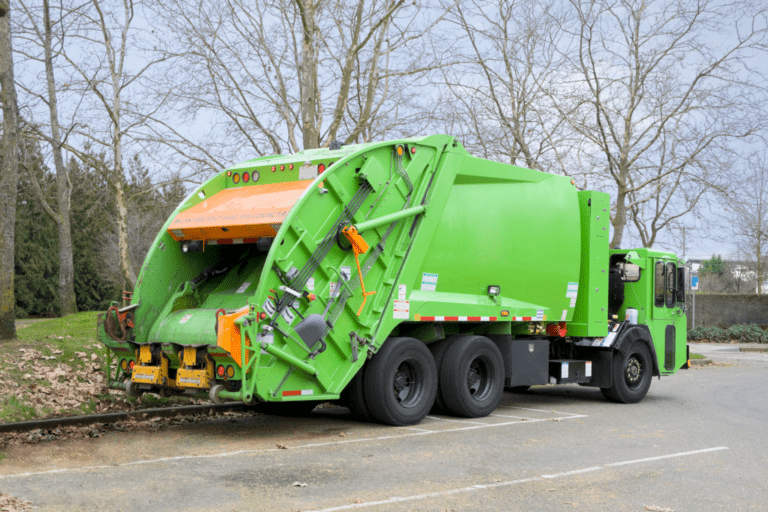Planned preventative maintenance is one of the most important aspects of fleet ownership. It consists of daily driver vehicle inspections, regularly scheduled service, and completing necessary repairs. Indeed, the purpose of a preventative maintenance program is to maximize the availability of the vehicles and to prevent potential problems in the future. These things cannot be done in a haphazard manner. In fact, the opposite is true and a planned preventative maintenance strategy is imperative for fleet owners. Creating such a strategy and implementing it ensures that problems are caught before a breakdown occurs.
The Importance of Preventative Maintenance
Preventative maintenance, unlike unscheduled repairs are meant to keep a vehicle in good condition, thus avoiding expensive downtime and repairs. This begins with the driver who performs a daily vehicle inspection, documents their findings, and reports any issues they’ve found. From there, it’s up to the fleet manager, mechanics and technicians to perform activities such as lubrication, adjustments, cleaning, equipment testing, repairs, and/or replacing worn or broken parts.
What Is a Planned Preventative Maintenance Strategy?
The best way to define a planned preventative maintenance program is that it’s a series of activities designed to keep a fleet vehicle operating smoothly for as long as possible. Generally, preventative maintenance activities happen while the vehicle is still running properly and no issues have been detected. The reason for this is simple. Even fleet vehicles that do not appear to have any problems can become worn out and quit running smoothly. A preventative maintenance plan ensures they remain in good running condition for longer.
Is Preventative Maintenance Required by the DOT?
The answer is yes, as a fleet owner, you are responsible for keeping your fleet vehicles in good working order and to make sure that they’re safe to operate. According to the Federal Motor Carrier Safety Administration (FMCSA), fleet owners and carriers are required to systematically inspect, repair, and maintain all motor vehicles and inter-modal equipment subject to its control. Carriers are also required to accurately document their maintenance efforts and to ensure that the records are made available within 2 days if requested.
How Often Should Planned Preventative Maintenance Be Performed?
There are no hard and fast rules for developing a preventative maintenance schedule and strategy. A fleet owner has to evaluate their fleet to determine the right maintenance schedule for their equipment. It depends solely upon the type of vehicle, age of the vehicle, and the amount and type of use it gets. For some fleets, it may be appropriate to bring the vehicles in twice a year, for others a bi-monthly schedule may be best.
What Needs to Be Included in Preventative Maintenance?
While the needs of your individual fleet vehicles may vary, your preventative maintenance program should include both mechanical maintenance activities and maintenance of safety items. At a minimum, however, you should be addressing the following during a routine preventive maintenance service:
-
Tune-ups
-
Engine Oil and Filter Changes
-
Transmission Fluid
-
Fuel System
-
Cooling System
-
Exhaust System
-
Electrical System Components
-
Belts and Hoses
-
Engine and Transmission Mounts
-
Drive Shafts or CV Joints
-
Braking System
-
Steering and Suspension System
-
Tires, Wheels, and Rims
-
Undercarriage and Frame
-
Exterior and Interior Lights
-
Body, Glass, and Mirrors
-
Windshield Wiper System
-
Horn
-
Seat Belts and Seat Structures
-
Fluid Leaks
-
Auxiliary Systems
How Do I Create a Preventative Maintenance Schedule?
The first step in creating a preventative maintenance strategy and schedule is taking stock of your fleet vehicles. Gather important data about each vehicle such as its make, model, year of manufacture, and mileage and document each of these details. It’s vital that this task is performed for every vehicle under your control so that you can determine the specific maintenance needs of your entire fleet. After you have this information, you’ll be able to complete the following tasks:
-
Create a checklist of all Preventative Maintenance service tasks to be performed.
-
Determine the Preventative Maintenance service interval or frequency that’s appropriate for your fleet.
-
Review and act upon driver vehicle inspection reports (DVIRs) and/or complaints.
-
Create a written preventive maintenance schedule for each vehicle.
-
Accurately document and keep records of preventative maintenance activities and outcomes.
Whip Around Can Help
Developing a preventative maintenance strategy and schedule is a daunting task, even for a seasoned fleet manager. Ensuring that the program is not only effective, but that it also complies with the FMCSA regulations isn’t easy, but Whip Around can help get you on track so you don’t have to worry anymore. Our Preventative Maintenance Feature, makes sure that you’ll never have unplanned maintenance problems happening at the worst possible moment. In fact, it offers several benefits to fleet owners and carriers including:
Easier Maintenance Tracking
 Mechanics inspecting a truck for maintenance.
Mechanics inspecting a truck for maintenance.
Paper maintenance schedules and records are hard to keep track of and it’s easy to lose sight of upcoming maintenance needs. Our Preventative Maintenance Feature helps you keep track of maintenance activities that have already happened, what actions were taken, and the next time maintenance should occur. Rather than individual records, all your fleet vehicle maintenance information is kept in one location where it’s easy for you to view it.
Scheduled Maintenance Reminders
A busy fleet is a good thing, but getting too busy can lead to forgetting about maintenance issues. Missing things is more than just frustrating, it can be expensive and dangerous. With Whip Around, you never have to worry about your failing memory. You’ll receive notifications that remind you to schedule maintenance. You can also include order lists that let you know what parts or other items you need to conduct that maintenance.
Customized Maintenance Alerts
You can send alerts to the individual responsible for a particular maintenance issue. This takes the pressure off of you and ensures that details aren’t missed.
Learn More About Whip Around
If you’re a fleet owner or fleet manager who’s interested in learning more about creating a preventative maintenance program, or you have questions about the process, please contact us. We’ll be happy to answer your questions, clarify any confusion, and we’ll also provide you with a free demo of our system so you can see how it works for yourself. You can also follow us on social media including Twitter, Facebook, and LinkedIn for more great tips and information designed to keep your fleet in the best shape possible.









